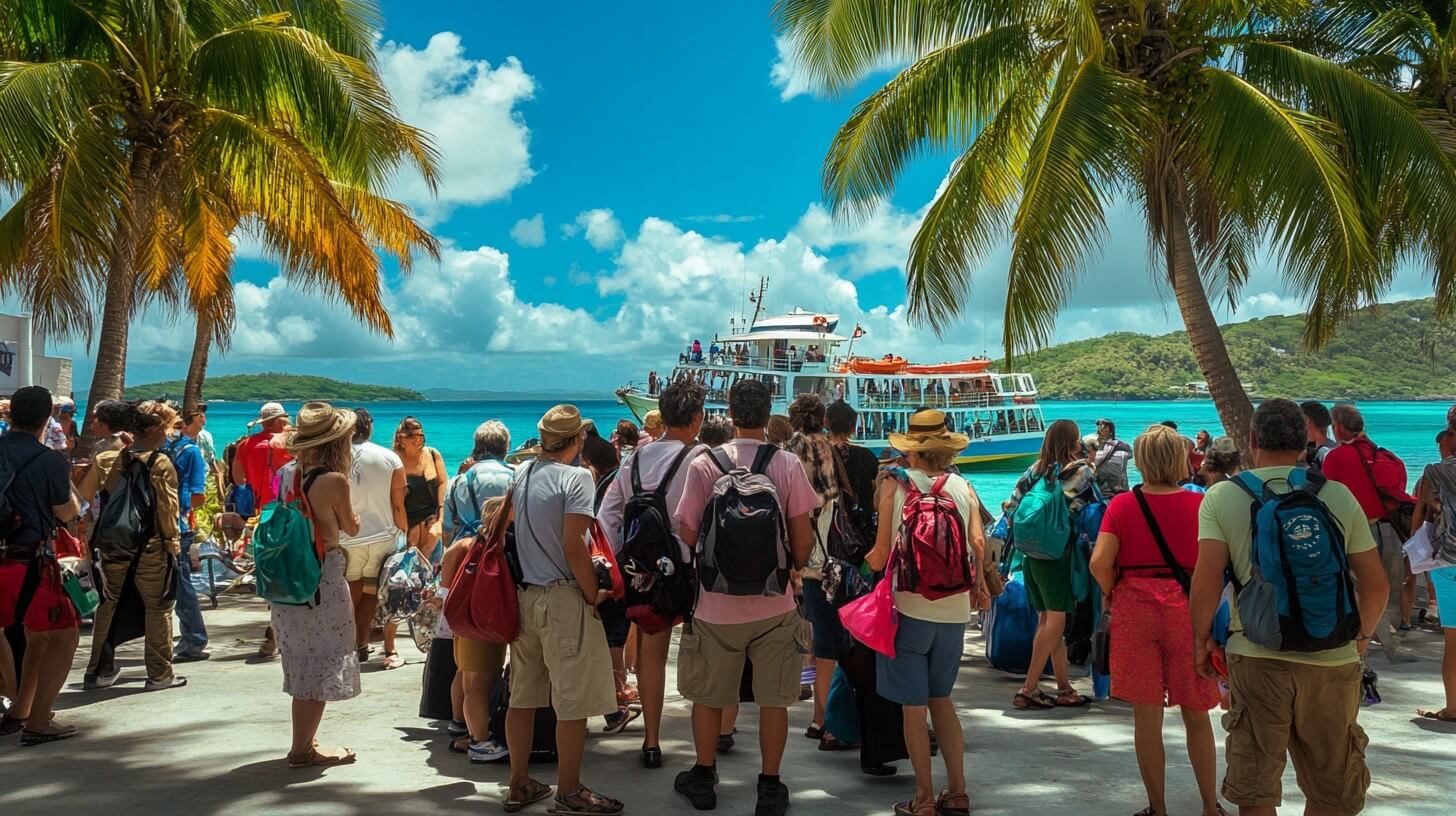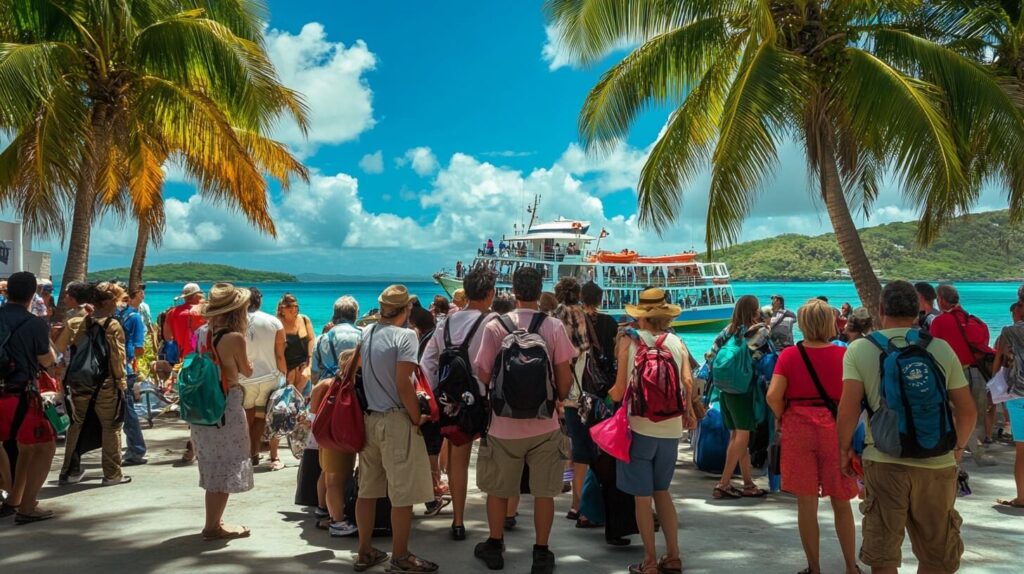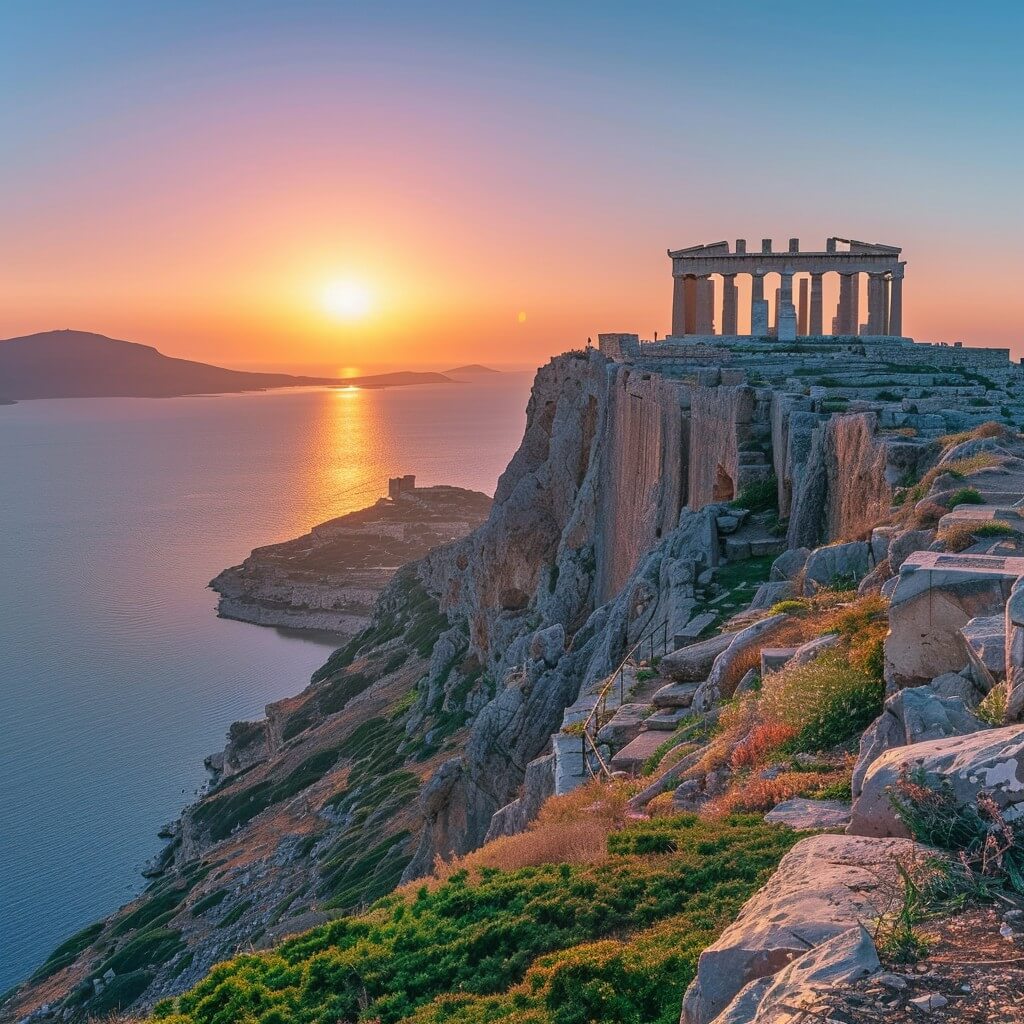
Discovering Cultural and Historical Sites Around the Baltic Sea: Must-See Landmarks

Are you ready to embark on a journey around the Baltic Sea Landmarks, exploring its rich tapestry of history and culture? The Baltic Sea region is a treasure trove of stunning landmarks, each with its own unique story to tell.
This guide will take you through some of the most captivating cultural and historical sites in the area, offering tips and personal insights to help you make the most of your adventure.
Common Questions and Concerns
What are the must-see cultural and historical sites around the Baltic Sea?
The Baltic Sea Landmarks is surrounded by countries with diverse histories and cultures, including Estonia, Latvia, Lithuania, Sweden, Finland, and Poland.
Each nation has contributed to the rich cultural mosaic of the region, offering a variety of landmarks that reflect their historical significance and artistic achievements.
How can I incorporate historical landmarks into my travel itinerary?
With so many fascinating sites to choose from, it can be challenging to prioritise your visit. This guide will help you identify the top landmarks and provide tips on how to fit them into your itinerary, ensuring you experience the best of the Baltic Sea’s historical and cultural offerings.
What makes these sites unique and worth visiting?
Each site has its own charm, from mediaeval towns and grand castles to innovative museums and picturesque architecture.
By visiting these landmarks, you’ll gain a deeper understanding of the region’s history and culture, making your trip both enriching and memorable.
Top Cultural and Historical Sites Around the Baltic Sea
Tallinn’s Old Town, Estonia
Tallinn’s Old Town is a captivating blend of mediaeval charm and modern vibrancy. As one of Europe’s best-preserved mediaeval cities, it offers a glimpse into the past with its cobbled streets, historic buildings, and charming squares.
- Mediaeval Charm: Wander through the labyrinth of cobbled streets and discover well-preserved mediaeval architecture. The Town Hall Square, with its ornate Gothic Town Hall, is a central hub for exploring Tallinn’s Old Town.
- Must-See Spots: The Alexander Nevsky Cathedral, an iconic symbol of Tallinn, stands out with its onion domes and intricate interior. Another highlight is Toompea Castle, which offers panoramic views of the city.
Personal Tip: I spent a delightful afternoon getting lost in the narrow streets of Tallinn’s Old Town, stumbling upon quaint cafes and boutique shops. The city’s mediaeval charm is incredibly engaging, and each corner seems to reveal a new, fascinating story.
Stockholm’s Vasa Museum, Sweden
The Vasa Museum in Stockholm is home to the Vasa, a 17th-century warship that was salvaged after sinking on its maiden voyage.
This well-preserved ship provides a unique insight into Sweden’s maritime history.
- Unique Exhibit: The Vasa is a remarkable example of shipbuilding from the 1600s. The museum’s interactive displays and detailed exhibits offer a comprehensive look at the ship’s construction and its fateful journey.
- Interactive Experience: Explore the Vasa’s intricate carvings and learn about the lives of those who built and sailed it. The museum also features exhibits on the ship’s recovery and restoration.
Personal Tip: Visiting the Vasa Museum feels like stepping back in time. I was fascinated by the level of detail in the ship’s carvings and the stories behind its construction. It’s a must-see for anyone interested in maritime history.
Riga’s Art Nouveau District, Latvia
Riga’s Art Nouveau District is renowned for its stunning collection of Art Nouveau architecture, making it one of the largest and most impressive ensembles in the world.
The district’s buildings are adorned with elaborate decorations and intricate designs.
- Architectural Marvel: Take a leisurely stroll through the district to admire the ornate facades and elaborate decorations. The district is a testament to Riga’s artistic and architectural heritage.
- Self-Guided Tours: The area is easily explored on foot. Look out for guided walking tours that provide historical context and highlight key buildings and architectural features.
Personal Tip: Wandering through Riga’s Art Nouveau District felt like walking through an open-air museum. The beauty and creativity of the architecture are truly breathtaking, and it’s a great spot for photography enthusiasts.
Gdańsk’s Main Town, Poland
Why Visit:
Gdańsk’s Main Town is a historical gem with a rich past that dates back to the mediaeval period. The town played a significant role in Poland’s history, particularly during World War II.
- Historical Significance: Gdańsk’s Main Town is known for its beautifully restored buildings and historical landmarks. Key sites include St. Mary’s Church, one of the largest brick churches in the world, and the historic Gdańsk Crane.
- Cultural Experience: The town is also home to vibrant markets, lively squares, and charming streets. It’s a great place to experience Polish culture and history.
Personal Tip: The atmosphere of Gdańsk’s Main Town is lively and engaging. I enjoyed exploring the bustling streets and learning about the town’s history through its preserved architecture and museums.
Helsinki’s Fortress of Suomenlinna, Finland
The Fortress of Suomenlinna is a UNESCO World Heritage site located on a group of islands off the coast of Helsinki.
This fortress is a significant example of military architecture and offers stunning views of the surrounding sea.
- Historic Military Site: Suomenlinna was built in the 18th century as a sea fortress and has played a key role in Finland’s military history. The fortress includes several museums, historic buildings, and well-preserved fortifications.
- Scenic Views: The islands offer beautiful views of the Baltic Sea and Helsinki’s skyline. It’s a great place for a relaxing stroll or a picnic.
Personal Tip: Exploring Suomenlinna felt like stepping back in time. The combination of historical sites and picturesque landscapes made it a memorable part of my trip to Helsinki.
Vilnius Old Town, Lithuania
Vilnius Old Town is a UNESCO World Heritage site known for its well-preserved mediaeval architecture and vibrant cultural scene.
The old town is a maze of narrow streets, historic buildings, and charming squares.
- Architectural Diversity: The area features a mix of Gothic, Renaissance, and Baroque architecture. Key landmarks include the Vilnius Cathedral, Gedimino Tower, and the Church of St. Anne.
- Cultural Hub: Vilnius Old Town is also home to numerous cafes, galleries, and shops. It’s a lively area where you can experience Lithuanian culture firsthand.
Personal Tip: I loved exploring Vilnius Old Town’s narrow streets and discovering hidden gems. The blend of architectural styles and vibrant atmosphere made it a highlight of my trip.

Tips for Planning Your Baltic Adventure
Create an Itinerary
To make the most of your trip around the Baltic Sea Landmarks, it’s essential to plan your itinerary carefully. Consider the following tips:
- Prioritise Your Destinations: Identify the sites you most want to visit and allocate time for each. This will help you manage your schedule and ensure you don’t miss any key landmarks.
- Allow for Flexibility: While planning is important, leave some room for spontaneous discoveries. You might come across local events or hidden gems that weren’t on your radar.
Check Local Events
Research local festivals, events, or cultural activities that may coincide with your visit. Attending a local festival or special event can offer a unique perspective on the region’s culture and traditions.
Stay Flexible
Although a well-planned itinerary is crucial, flexibility can enhance your travel experience. Be open to changing your plans based on local recommendations or unexpected opportunities.
Pack Smart
Ensure you pack appropriately for the region’s weather and activities. Comfortable walking shoes, layered clothing, and a good camera are essential for exploring and capturing the beauty of the Baltic Sea.
Learn Basic Phrases
Familiarise yourself with basic phrases in the local languages of the countries you’ll visit. Simple greetings and expressions can enhance your interactions with locals and enrich your travel experience.
Conclusion
Exploring the cultural and historical sites around the Baltic Sea offers an enriching journey through centuries of history and diverse cultural heritage. From the mediaeval charm of Tallinn’s Old Town to the impressive maritime legacy of Stockholm’s Vasa Museum, each destination around the Baltic Sea provides a unique window into the past.
The stunning Art Nouveau architecture of Riga, the historical significance of Gdańsk, the scenic beauty of Suomenlinna, and the vibrant streets of Vilnius Old Town all contribute to a tapestry of experiences that make this region truly special.
As you plan your travels, remember to blend structured itineraries with the flexibility to embrace spontaneous discoveries. Each city and landmark has its own story to tell, and immersing yourself in these narratives will deepen your appreciation of the Baltic’s rich cultural and historical tapestry.
Whether you’re a history enthusiast, an architecture aficionado, or simply a curious traveller, the Baltic Sea region offers something for everyone. Take the time to explore these incredible sites, engage with local culture, and create lasting memories. Share your experiences and insights with fellow travellers, and keep coming back to refresh your knowledge and planning tips.
Enjoy your journey through the Baltic Sea and let its remarkable landmarks inspire and captivate you.
Safe travels and happy exploring!
Frequently Asked Questions
What are some must-visit historical cities in the Baltic region?
The Baltic region is home to several historically significant cities that are well worth a visit:
- Riga, Latvia: Wander along the picturesque banks of the Daugava River and explore the colourful Hanseatic buildings. Visit Riga Castle and experience the lively central market.
- Vilnius, Lithuania: Discover the ornate architecture of the Church of the Dawn and visit one of Europe’s oldest universities. The KGB museum offers fascinating insights into the area’s Soviet past.
- Tallinn, Estonia: Explore the Mediaeval underground tunnels known as the Bastion Tunnels, which offer a glimpse into the city’s history during World War II and the Soviet era.
Are there any unique religious sites in the Baltic countries?
Yes, the Baltic countries feature some remarkable religious landmarks:
- Hill of Crosses, Lithuania: Located near Siauliai, this unusual religious shrine consists of tens of thousands of crosses on a small hill. It symbolises the resilience of Lithuanian people, as crosses would reappear even after being destroyed by the Nazis and Soviets.
- Church of the Dawn, Vilnius: This ornate church in Lithuania’s capital is one of the city’s most significant religious monuments.
What are some notable castles or fortresses in the Baltic region?
The Baltic region boasts several impressive castles and fortresses:
- Trakai Castle, Lithuania: This 14th-15th century island castle features fairytale-like pepperbox turrets. It’s accessible by a drawbridge and offers a glimpse into mediaeval life.
- Riga Castle, Latvia: Once controlled by Germans and Poles, this castle now serves as the residence of the Latvian President.
Are there any significant natural landmarks around the Baltic Sea?
The Baltic region offers several notable natural attractions:
- Curonian Spit National Park, Lithuania: This park features windswept golden sand dunes, ancient evergreen forests, and rich birdlife. It’s also home to the intriguing ‘Hill of Witches’, adorned with wood carvings depicting local myths.
- Chalk Coast, Rügen Island: Located in Germany, this famous coastline is known for its striking white cliffs.
What are some lesser-known but interesting historical sites in the Baltic countries?
Some intriguing lesser-known sites include:
- Saaremaa Island, Estonia: This island, previously isolated during the Soviet era, preserves many age-old traditions. Visit the open-air Koguva Museum, discover ornate stone carvings at Karja Church, and view the 4000-year-old Kaali Meteorite Crater.
- Garkau Farm, Klingberg: Located in Germany’s Baltic coast region, this historical monument offers insights into traditional rural life.
Remember, these sites offer a mix of cultural, historical, and natural attractions, making the Baltic region a diverse and fascinating area to explore.
You may also like
Archives
Calendar
| M | T | W | T | F | S | S |
|---|---|---|---|---|---|---|
| 1 | 2 | 3 | 4 | 5 | 6 | |
| 7 | 8 | 9 | 10 | 11 | 12 | 13 |
| 14 | 15 | 16 | 17 | 18 | 19 | 20 |
| 21 | 22 | 23 | 24 | 25 | 26 | 27 |
| 28 | 29 | 30 | ||||